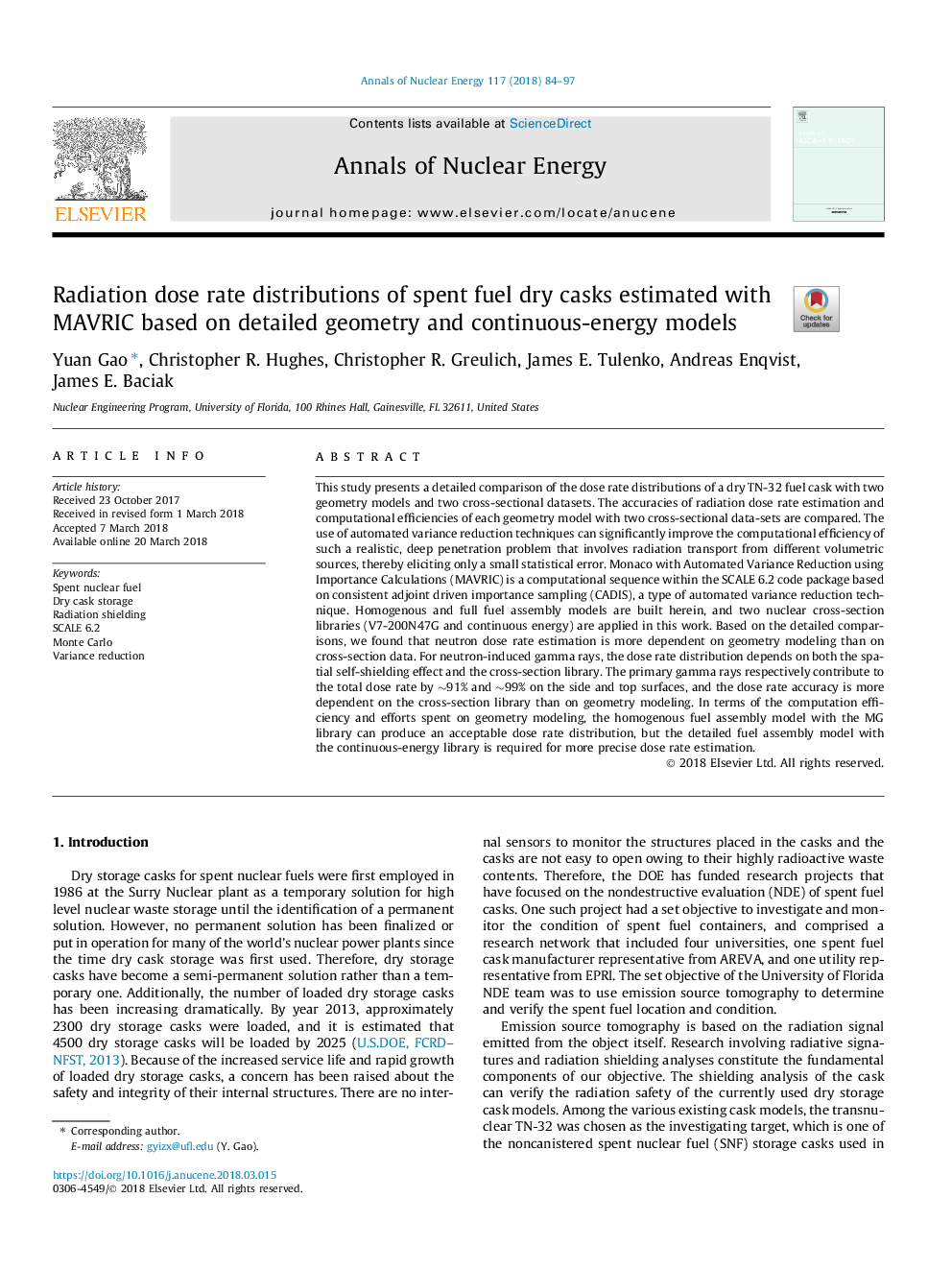| کد مقاله | کد نشریه | سال انتشار | مقاله انگلیسی | نسخه تمام متن |
|---|---|---|---|---|
| 8066988 | 1521079 | 2018 | 14 صفحه PDF | دانلود رایگان |
عنوان انگلیسی مقاله ISI
Radiation dose rate distributions of spent fuel dry casks estimated with MAVRIC based on detailed geometry and continuous-energy models
دانلود مقاله + سفارش ترجمه
دانلود مقاله ISI انگلیسی
رایگان برای ایرانیان
کلمات کلیدی
موضوعات مرتبط
مهندسی و علوم پایه
مهندسی انرژی
مهندسی انرژی و فناوری های برق
پیش نمایش صفحه اول مقاله

چکیده انگلیسی
This study presents a detailed comparison of the dose rate distributions of a dry TN-32 fuel cask with two geometry models and two cross-sectional datasets. The accuracies of radiation dose rate estimation and computational efficiencies of each geometry model with two cross-sectional data-sets are compared. The use of automated variance reduction techniques can significantly improve the computational efficiency of such a realistic, deep penetration problem that involves radiation transport from different volumetric sources, thereby eliciting only a small statistical error. Monaco with Automated Variance Reduction using Importance Calculations (MAVRIC) is a computational sequence within the SCALE 6.2 code package based on consistent adjoint driven importance sampling (CADIS), a type of automated variance reduction technique. Homogenous and full fuel assembly models are built herein, and two nuclear cross-section libraries (V7-200N47G and continuous energy) are applied in this work. Based on the detailed comparisons, we found that neutron dose rate estimation is more dependent on geometry modeling than on cross-section data. For neutron-induced gamma rays, the dose rate distribution depends on both the spatial self-shielding effect and the cross-section library. The primary gamma rays respectively contribute to the total dose rate by â¼91% and â¼99% on the side and top surfaces, and the dose rate accuracy is more dependent on the cross-section library than on geometry modeling. In terms of the computation efficiency and efforts spent on geometry modeling, the homogenous fuel assembly model with the MG library can produce an acceptable dose rate distribution, but the detailed fuel assembly model with the continuous-energy library is required for more precise dose rate estimation.
ناشر
Database: Elsevier - ScienceDirect (ساینس دایرکت)
Journal: Annals of Nuclear Energy - Volume 117, July 2018, Pages 84-97
Journal: Annals of Nuclear Energy - Volume 117, July 2018, Pages 84-97
نویسندگان
Yuan Gao, Christopher R. Hughes, Christopher R. Greulich, James E. Tulenko, Andreas Enqvist, James E. Baciak,